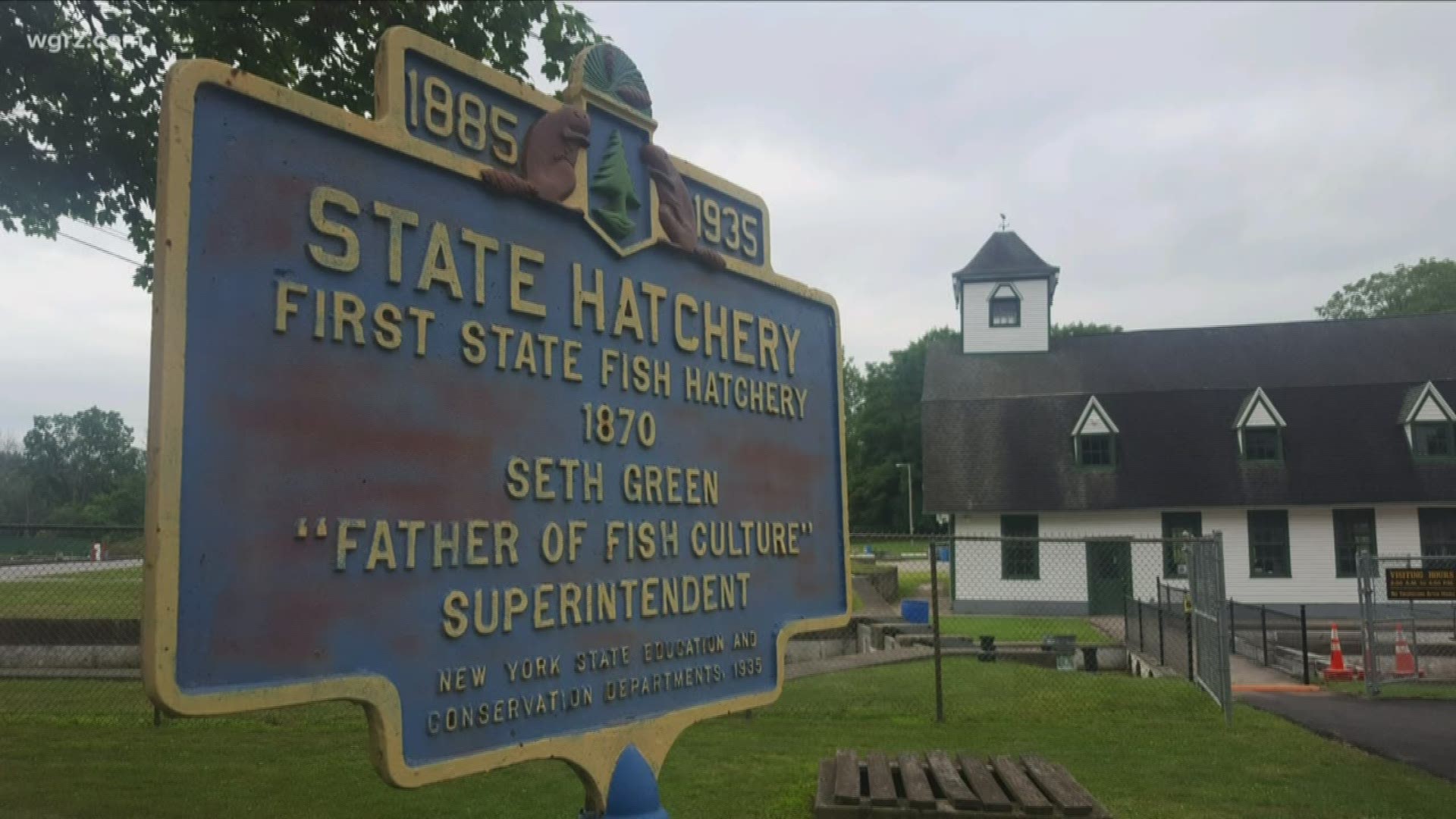CALEDONIA, N.Y. — If you have ever had the pleasure of pulling a brown trout out of a Western New York creek or stream, you can say a big thank you to a man named Seth Green, widely known as the "Father of Fish Culture".
Green started the Caledonia Fish Hatchery more than a century and a half ago. The hatchery produces 90% of the Brown Trout released in New York. That equates to 175,000 pounds of one species of fish from the 12 hatcheries in New York.
And it isn't only the production that makes this place special. It's the heritage. Caledonia is the oldest hatchery in the western hemisphere. The Main building dates back to the beginning.
Seth Green was a pioneer. In fact, only other two people in the world had attempted to artificially raise fish before Green—Marco Polo and a German scientist. A shortage of fish in the Rochester area due to pollution and over-fishing drove Green, a fish store owner, to figure out how to breed his own supply.
Hatchery Manager Bob Stein says he took that search into the field. "One day he decided to go up to Canada, and he was up there looking at a stream. He saw fish spawning. He literally spent 2 days hanging from a tree, learning how they were spawning, reproducing. He started copying what the fish did on an artificial basis."
Green brought those methods home to Caledonia and put the natural surroundings to good use. "He knew Spring Creek was a good water supply. Temperatures were correct for raising trout, averaging 52 degrees."
That water is then filtered and aerated. The fish are fed regularly. Some pens hold fingerlings, just a few inches long, others hold two-year-olds, which are about 6 to 8 inches long. Those fish are used for stocking. Other pens hold the jumbo trout, the breeder fish.
The same techniques are used today with a few improvements. One thing that has been added over the years is netting, so their efforts don't result in a regular meal for the Blue Heron that call these parts home.
For more information on hours you can check out the New York State Department of Environmental Conservation website.

